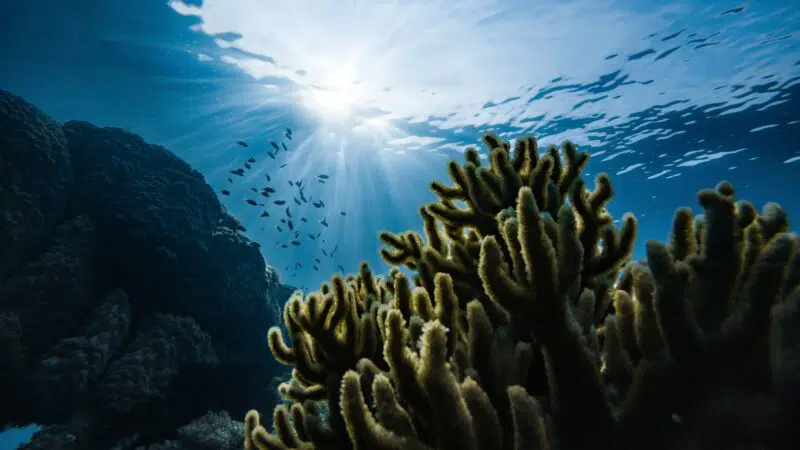Welcome to the Top 10 Dangerous Marine Animals.
Approximately 70% of the earth is covered in water, most of this is made up of the oceans. The Pacific Ocean is the largest ocean covering roughly 30% of earth’s surface. Many marine animals are found in these waters, some of which are surprisingly dangerous.
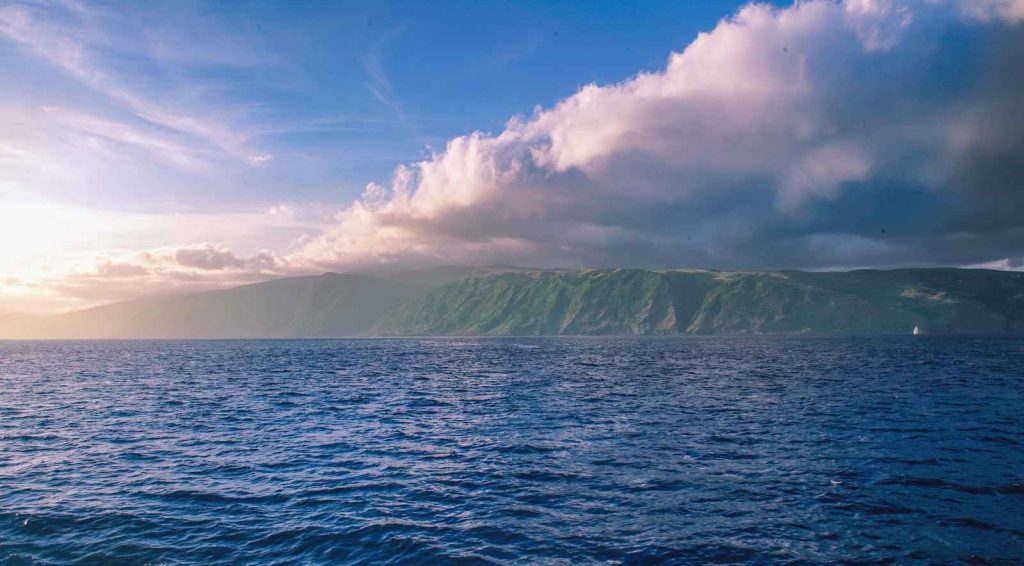
You may be familiar with some of the animals found underwater. In this article, we explore 10 of the most dangerous animals found underwater.
Click below to any section on the top 10 dangerous marine animals:
#1 Sea Snake
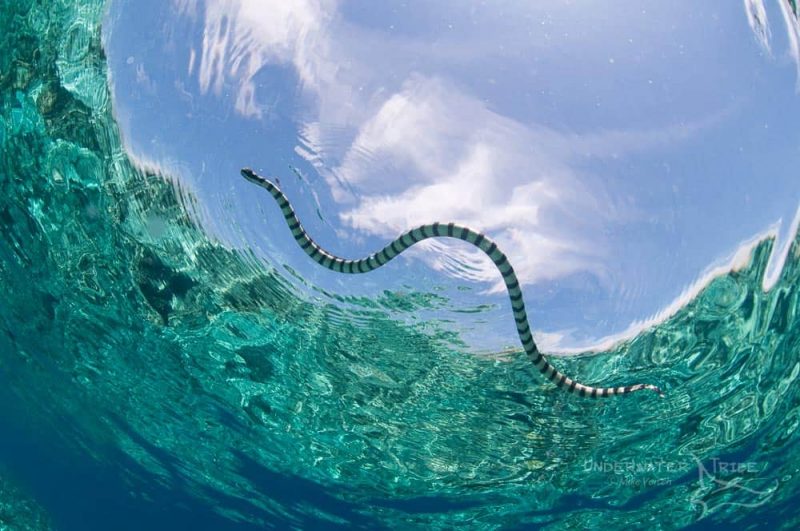
There are about 60 kinds of very poisonous ocean snakes in the ocean, belonging to the cobra family. They are divided into two main groups. One group, the true sea snakes, is related to land snakes in Australia. The other group, the sea kraits, is related to Asian cobras. That is why sea snakes are on the list of the top 10 dangerous marine animals list.
Albeit these snakes’ toxin is the most powerful of all snakes, human fatalities are somewhat uncommon in light of the fact that ocean snakes are not forceful, their toxin yield is little, and their teeth are exceptionally short. Of the 55 types of genuine ocean snakes, most grown-ups are 1-1.5 meters long, albeit a few people might develop to 2.7 meters. Ocean snakes are something like 60 types of exceptionally venomous marine snakes of the cobra family.
There are two autonomously advanced gatherings: the genuine ocean snakes which are connected with Australian earthly elapids, and the ocean kraits which are connected with the Asian cobras.
Albeit these snakes’ toxin is the strength of all snakes, human fatalities are generally uncommon in light of the fact that ocean snakes are not forceful, their toxin yield is little, and their teeth are exceptionally short. Of the 55 types of genuine ocean snakes, most grown-ups are 1-1.5 meters long, albeit a few people might develop to 2.7 meters.
#2 Pufferfish
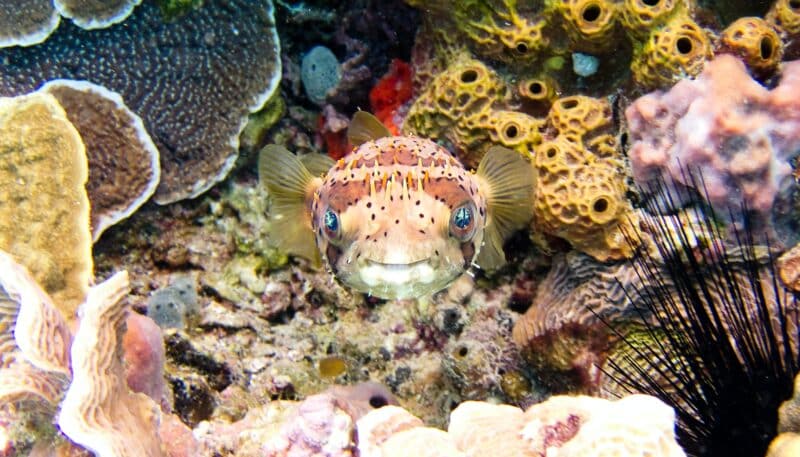
Pufferfish live in the warm waters of the Indian, Pacific, and Atlantic Oceans, with some species in freshwater or brackish environments. They are extremely poisonous, ranked as the second most poisonous animal in the world.
There are about 120 species of pufferfish globally, and many of them are dangerous. It’s best to stay away from them, as “dangerous” is an understatement for these creatures.
Their poison has tetrodotoxin, which is on various occasions more perilous than cyanide. This poisonous substance is found in the eyes, liver, kidneys, ovaries, and spikes of these fishes. No neutralizing for puffer fish toxin and they will kill an adult human in part of seconds or minutes.
Whenever they saw any sort of peril, they will take a state of ball and their body will develop like a ball. Amazingly, their meat anyway staggeringly unsafe in nature yet is seen as effortless in certain pieces of Japan, Korea, and China. In any case, it is served by extraordinarily pre-arranged connoisseur specialists.
#3 Blue Ringed Octopus
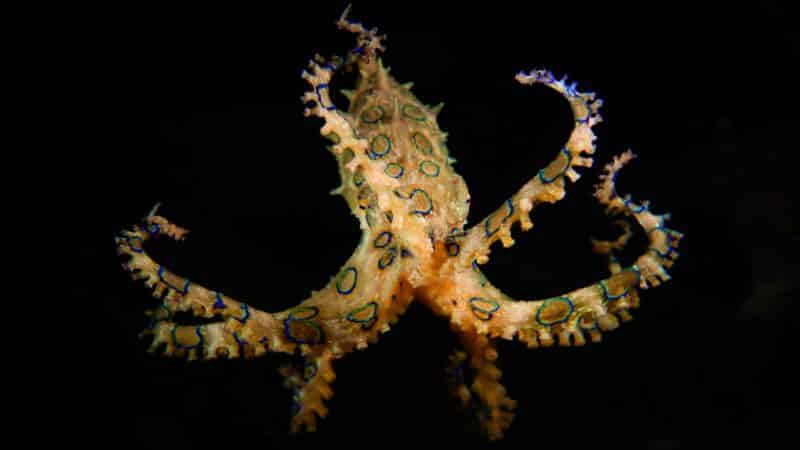
Blue-ringed octopuses are mostly found in the Pacific and Indian Ocean areas. They are quite small, usually about 5 to 8 inches in length, but they contain a potent toxin that can kill 26 adults in just a few minutes. One of the significant risks with these fish is that their bites often don’t cause pain, so people bitten by them may not realize it immediately.
Hence they are on the list of the top 10 dangerous marine animals. It’s the point at which blue ringed octopus begin to show aftereffects like respiratory despairing and loss of movement that they’ll understand something is misguided.
It is considered that no remedy has been made such a long way for this octopus toxin, so it’s unquestionably conceivably the most hazardous sea creature in earth’s water. Different symptoms of its snack consolidate nausea, cardiovascular breakdown, loss of movement, and visual inadequacy; setbacks can kick the can in minutes.
Fortunately, this creature isn’t vital and will by and large escape from individuals. Moreover, the circles on their body start to change assortment once the animal feels sabotaged so that fills in as a notification ahead of time to dial down.
#4 Stonefish
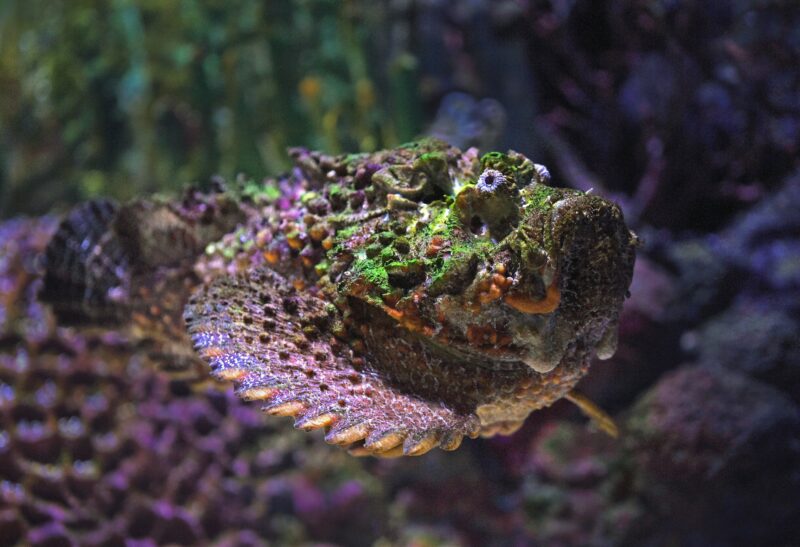
Stonefish, inhabiting the Pacific and Indian Oceans, particularly in shallow tropical waters and coral reefs, are recognized as some of the most venomous fish in the world. They pose a particular danger for three key reasons.
Firstly, they possess 13 sharp, spine-like structures on their backs, which are extremely hazardous. Secondly, they are excellent at camouflaging with their surroundings, making them nearly invisible until inadvertently stepped on. Lastly, their venom remains potent even out of water, retaining its toxicity for up to 24 hours on land.
Along these lines, when they are out of the water, they really imply a genuine liability. Its poison is hazardous and genuinely challenging. Jumpers who have experienced it portray the exacerbation as – staggering. There are records of losses requesting the affected body limb that a stonefish stings cut off.
Possible results of these fishes sting will spread out through the body and significantly impacts the kidneys. What’s more, shockingly, after recovery, the setback will feel torturous for quite a while later. Reef Stonefish sting can cause respiratory loss of movement and could progress to cardiovascular breakdown. The Stonefish neutralizer is known as the second most commonly controlled one found in Australia.
#5 Great White Shark

Great white sharks, also referred to as white sharks, white pointers, or simply great whites, are a species of large mackerel sharks inhabiting the coastal surface waters of all major oceans. They are notable for their size, with larger females capable of reaching up to 6.1 meters in length and weighing between 1,905 and 2,268 kilograms at maturity. Males typically average between 3.4 to 4.0 meters, while females measure about 4.6 to 4.9 meters.
Recent studies have found that great white sharks can live up to 70 years or more, making them one of the longest-lived cartilaginous fishes known. Males reach sexual maturity at 26 years, while females take about 33 years. Great whites can swim at speeds up to 25 km/h in short bursts and dive to depths of 1,200 meters. They prefer coastal and offshore waters with temperatures ranging from 12 to 24 °C, with significant populations in the United States.
The great white shark has a distinct large, conical snout and its tail fin has similarly sized upper and lower lobes. Its body exhibits countershading, with a white underside and a darker dorsal area, usually in shades of brown or blue, creating a mottled appearance. This coloring camouflages the shark, making it difficult for prey to spot it, as it blends with the ocean from above and casts minimal silhouette from below.
Leucism is extremely rare in this species but has been recorded in one individual. Like many sharks, great whites have rows of serrated teeth behind their main ones, ready to replace any that break off. When attacking, they shake their heads side-to-side to saw off large chunks of flesh. These sharks have relatively larger eyes compared to other shark species, with a dark blue iris instead of black.
#6 Box Jellyfish

These are different species that get their name from their square-shaped bodies. Countless carton jams have particularly venomous stings, with the gigantic box jellyfish having the most beautiful sting. Found along the northern coastlines of Australia and tropical South East Asia, the sea wasp is by, and large saw as “the most dangerous jellyfish on earth” and has caused in excess of 60 deaths in Australia alone.
In various regions, the death toll is presumably going to be much higher, particularly where a cure isn’t expeditiously open. The box jellyfish poison can’t avoid being the second most common solid of any creature on Earth, with only the geographic sea cone more venomous. Checks suggest that each animal contains good poison to kill 60 adult individuals, and very few animals can cause passing so rapidly.
In ludicrous cases end using cardiovascular breakdown has been known to occur in under five minutes resulting in being stung—no wonder these jellyfish earn themselves a spot on the top 10 dangerous marine animals list.
The real sting causes alarming torture close by a consuming sensation contrasted with being set apart with a super-hot iron. The (sort of) good news is that rather than standard reasoning, peeing on the sting has no recognizable effect! A significant part of the time, the appendages stay joined to the individual being referred to and can continue to sting even after they have left the sea regularly, provoking scarring.
On the contrary, completion of the size scale is the minute Irukandji jellyfish. These vast and negligible fathomed box jellyfish have a solid poison that can achieve the Irukandji condition, which gradually appears after the genuine sting. As well as being conceivably destructive Irukandji is represented as being unimaginably horrendous. One loss said it started as more awful than work and got more remarkable.
#7 Lionfish
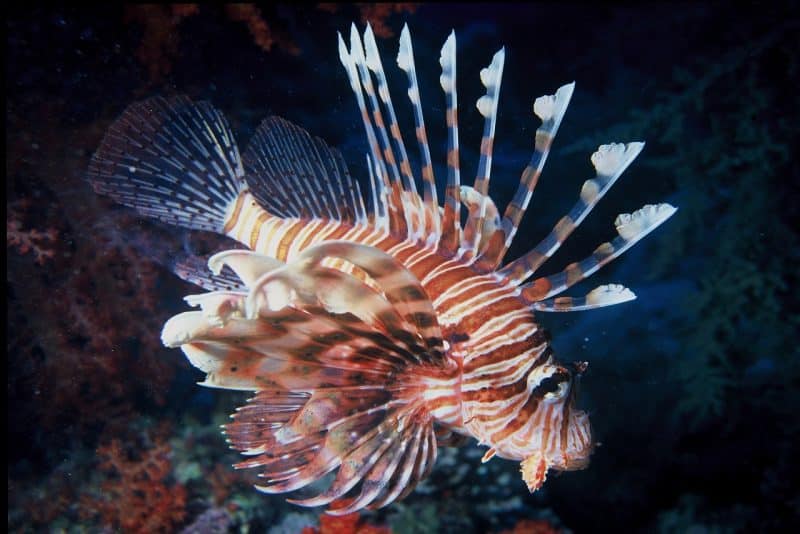
These are found in Indo-Pacific water areas and the Atlantic district. Lionfish are exceptionally venomous and have incredibly pretentious pectoral adjusts, and unsafe spines. Their poisonous substance is well known that relatively few trackers will dare take on a lionfish.
To individuals, these stings are staggeringly anguishing and cause affliction alongside issues in relaxing. Lionfish are generally found in all marine climate types found in warm marine waters of the wildernesses.
Lionfish have been found in water profundities from 1 to 300 feet on hard bases, mangroves, ocean grass, coral, and artificial reefs (like wrecks). Lionfish are accepted to be evening-time trackers, yet they have been found with full stomachs during the day in the Atlantic. They move about by relaxed undulating the sensitive light emissions dorsal and butt-driven edges. During the day, they occasionally retreat to edges and crevices among the stones and corals.
Yet in the Atlantic, lionfish are as often as possible seen moving about during the day, both alone and in little social affairs. The extent of the lionfish covers a particularly tremendous locale from Western Australia and Malaysia east to French Polynesia and the Collected Domain’s Pitcairn Islands, north to southern Japan and southern Korea, and south to Dominate Howe Island off the eastern coastline of Australia and the Kermadec Islands of New Zealand. In the center, the species is tracked down all through Micronesia.
#8 Tiger Shark

These sharks are types of memorial sharks and the leading surviving individual from the class Galeocerdo. It is a vast macropredator, fit for achieving a length north of 5 m. Populaces are found in numerous tropical and mild glasses of water, particularly around focal Pacific islands. Its name gets from the light stripes down its body, which looks like a tiger’s example, however, blurs as the shark develops.
The tiger shark is a lone, generally nighttime tracker. It is eminent for having the amplest food range, everything being equal, with a scope of prey that includes scavengers, fish, seals, birds, squid, turtles, ocean snakes, dolphins, and, surprisingly, other more modest sharks. It additionally has a standing as a “trash eater,” consuming an assortment of unpalatable, man-caused objects that to wait in its stomach. However, dominant hunters, tiger sharks, are in some cases taken as prey by gatherings of executioner whales.
It is viewed as a close to undermined animal category due to finning and fishing by people. The tiger shark is second just to the great white in recorded deadly goes after people, yet these occasions are still really intriguing. Female tiger sharks are more significant as compared to the whales, as per the record, one of the most prominent female tiger sharks is around 3360 pounds in weight and around 18 feet in length. Monstrous unsubstantiated these sharks were north of 24 feet.
Yet that worth surpasses some other example and expects check to acknowledge as truth. Among every surviving shark, the typical sharks are just more modest as compared to the whale sharks, relaxing sharks, and incredible white sharks. Tiger shark is one of the second-biggest hunters after extraordinary white sharks. Ineffectively concentrated with some other species are green-land sharks, Pacific sleeper, blunt-nose six-gill fish, and Greenland sharks cross-over long.
Yet, researchers have not affirmed their average mature sizes. There are one shark species named hammerhead shark which has comparable body lengths; however, they miss the mark regarding the tiger sharks’ status due to their more modest typical weight.
#9 Stingray
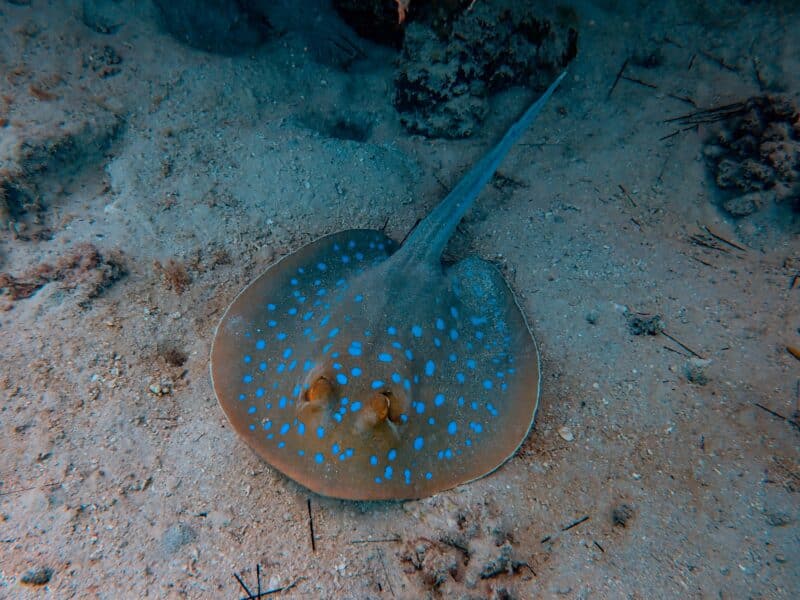
Anyway, experts trust the stingray to be a gentle creature those fundamental attacks legitimately, a couple of commonly declared events, including this fish catching a lime light as a result of this nature. Various nature dears could review Steve Irwin, the well-known “Tracker of Crocodiles.” Who kicked the bucket on September 4, 2006, in what experts tracked down a disaster with Stingray?
For the most part, the wounds or chomps by Stingrays would occur on a singular’s lower legs as these fish like to stay canvassed in the sand on the ocean bottom, so it’s generally expected to incidentally place an advance on them. Regardless, in Steve Irwin’s case, the frightened fish flip out its risky and venomous thorned tail and slice him positively from the chest to the heart. Thus it is clear why they earn themselves a mention on the top 10 dangerous marine animals list.
Stingray, being alluded to, was thusly perceived as a Bull of Australia pillar with a cheat that was conscious up to 8 inches long. The poison in itself is very anguishing, and it’s not ordinarily risky. Just a month and a half after Mr. Irwin’s downfall, an individual named James Bertakis 81 years almost encountered a comparable fate when a stingray hopped from the water and came into his fishing boat in Florida and cut him on his chest.
Luckily for this situation, the man didn’t try to wipe out the spikes from the chest; this act presumably saved him from passing on. This unrealistic instance of a physical issue from stingray nibble searches for clinical thought quickly on the grounds as the poison can harm cells and tissues in the human body. If untreated from here onward, indefinitely for a truly lengthy timespan, the affected limb could be removed. The dubious realized truth in regards to stingrays is that they contribute a massive load of energy somewhat covered on the ocean bottom.
Jumpers need to be careful that they won’t put a stage on them. If not, they will chew.
#10 Barracuda
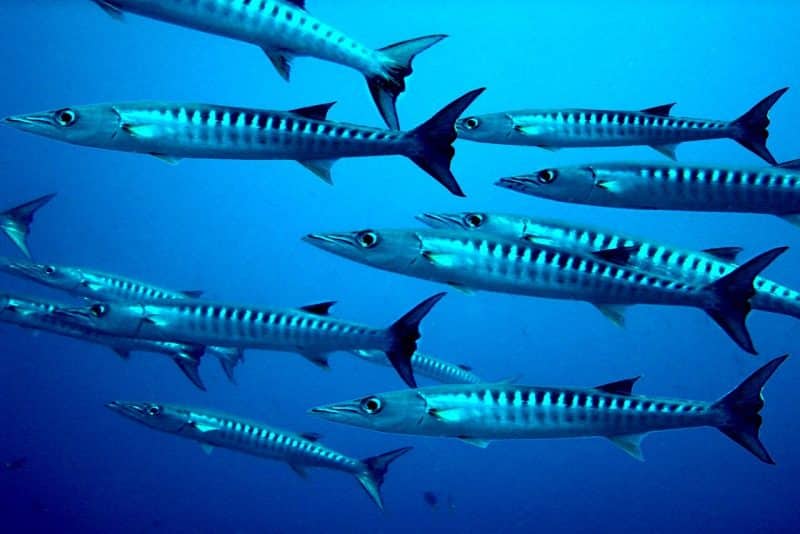
There are various kinds of Barracuda fish. anyway, the Incomparable Barracuda (Sphyraena Barracuda) is one of the most significant different fishes. Barracuda fish is fast, powerful, torpedo-shaped, and can be 1.8 meters long.
We should not disregard its assortment of exceptionally sharp, startling teeth. A dead barracuda fish is unsafe as its tissue can have ciguatera poison in it, which can be perilous. This class of Barracuda fish is otherwise called striker for individuals anyway, especially people hopping while simultaneously wearing shimmering things. Their snack inflicts damage and blood mishap. Moreover, a couple of instances of Barracuda fish hopping to such an extent that they emerged from the water to pursue people in boats.
Summary of top 10 dangerous marine animals
Animals are only hazardous when they are threatened or feel threatened. A strange animal coming toward it might induce a dangerous reaction.
If you enjoyed reading the above, check out the top 10 dangerous water animals and the top 10 deadly Australian animals next!
Join our Forum for free today!

- These are The 5 Largest Great White Sharks Ever Recorded - July 19, 2024
- The Surprising Benefits of Big Game Hunting - July 18, 2024
- $100k+ Hunting Experiences The Most Expensive Animals to Pursue - July 17, 2024

